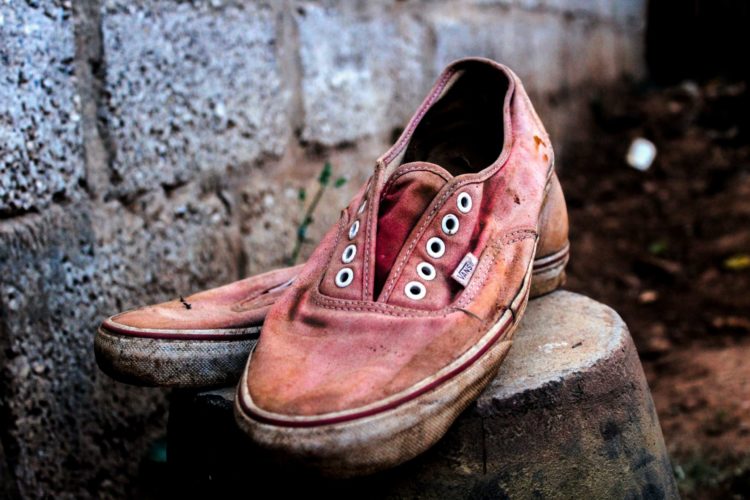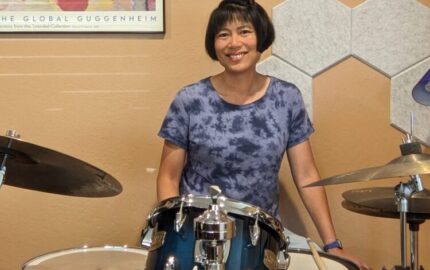I have chronicled the road to prison traveled by a 16-year-old Black kid involved in a double murder. I have shadowed a 22-year-old dancer struggling to find her place in a professional ballet company. I have written about the parole hearing of a man serving a life sentence for stabbing his wife a dozen times, about a Vassar-educated blueblood who became a communist spy, about a former college administrator deep into dementia.
You get the idea. This is what we journalists do. We go out into the world and report and write about people who live different lives than we do — which is true someone living across the street as well as someone living in a maximum security prison.
To write honestly and meaningfully, with context and sensitivity, we must write from a place of understanding. And that understanding comes from the people themselves, those with the lived experience we are trying to capture. How do we do that?
I think the key is empathy.
Reporting beyond the cliché
Empathy is often described as the ability to “walk a mile in someone else’s shoes.”
This, of course, is a cliché. But more than that, it is just plain wrong-headed. Allow me to belabor this point.
How can we walk a mile, or take a single step, in someone else’s shoes? It is possible that we have never even seen shoes like this before. Do we pause to think about this? Do we ask permission to walk in these shoes? How does that person feel about strange feet inserted in their shoes? Before we attempt to slip our foreign feet into someone else’s familiar shoes, do we ask about this footwear, where it came from (a hand-me-down? an impulse-buy?), where it’s been (in the back of a closet? on a long trip?), how long it’s been worn? Do we ask how well these shoes fit the wearer? If the wearer likes these shoes? It is possible that our feet are too big or too small to fit, too narrow or too wide. Maybe we trip over the laces before we take a single step. So how is it that we can “walk a mile”?
Okay. I believe I have adequately stomped (in my own shoes) on this cliché.
So if empathy isn’t walking in someone else’s footwear, what exactly is it? And why is it essential to our work? And how might we journalists practice it?
Neither sympathy nor softness
Let’s get this out of the way first: Empathy is not a kind of softness, a squishy (read: unprofessional) attitude a journalist has toward a story, a source, a way of doing the work that undermines the veracity and clear-headedness of that work. Empathy is not agreeing with someone or being moved to tears or laughter by their experiences. It is not forging or experiencing an emotional bond. That is sympathy.
Empathy is the ability — or I would say the ongoing challenge — to try to understand another person’s point of view. This hinges on our recognition that we each see the world through a subjective lens crafted from the circumstances and experiences of our lives. If we don’t recognize this, if we think that what we see is the way it is, we have little hope of understanding others. Empathy begins with our acknowledgement of our own filter: the shoes we walk in, the shoes that are comfortable and comforting to us.
This is not a simple thing, this recognition and acceptance. For those schooled, as I was, in “objective journalism,” this can feel like a defeat. Or maybe an insult to our professionalism. It is neither. Nor is it some “woke” statement. It is simply how we humans are built. To see only through one’s own filter stands in the way of meaningful and honest storytelling. And it makes empathy impossible.
Psychologists and neuroscientists have been studying empathy in human behavior since the mid-twentieth century and have identified three categories, naming them either cognitive, emotional and compassionate; or cognitive, behavioral and affective. But really, there is no reason to get into the weeds about this.
I think it is more helpful to our work to think of empathy as either a cognitive response or an emotional response. Cognitive empathy, as you can guess, is a thinking process. It is purposeful and deliberate, a concerted attempt to understand others. It employs a journalistic skill we pride ourselves on: asking questions. To understand another person’s perspective, what is important to them, how they think about issues — what shoes they wear — we ask them, right?
Yes. But, perhaps more important, our understanding, our cognitive empathy, rests on the often ignored skill of listening, on giving others the opportunity to take the conversation where they want to take it, not where we want to direct it. We can, in short, shut up. Silence is a very powerful tool — not stony silence, not a temporary and uncomfortable pause, but inquisitive and inviting silence, a silence that beckons.
And then there is the simple (and underused) skill — and it is a skill — of simply being there. If we want to understand The Other, what better way than to watch what unfolds in their life? Oftentimes we journalists are so intent on taking action (asking questions, capturing video or audio) that to be, in Nora Ephron’s words, “the wallflower at the orgy,” feels as if we are shirking our responsibilities. We are not. Unobtrusive (I do not, emphatically, mean invasive) observation is a portal to practicing the journalism of empathy.
Building your empathy skills
The misconception is that some people are empathetic and some people are not. In fact, cognitive empathy can be learned. We can practice empathy by using verbal and nonverbal signals to show we are working to understand another person’s feelings and ideas. These are simple acts: leaning in when someone talks, nodding, looking someone in the eyes, putting down a pen. We can employ and practice empathetic techniques in the field: face-to-face time with subjects, listening with intention, taking the time to observe with an open and inquisitive mind. We can exercise our Muscle of Empathy by remaining humble and remembering whose story this is. We approach the work after diligent research, but we don’t approach our subjects as if we are the experts. They are the experts. That acknowledgement is part of the practice of empathy.
If this sounds to you like the work cultural anthropologists do, you’re right. They are, the best ones are, experts in understanding and chronicling The Other. For a book I wrote years ago about teen girl culture and mothering a 21st century teen, “My Teenage Werewolf,” I thought of myself as Margaret Mead in Middle School as I sat quietly in the back of classrooms and cafeterias for 18 months.
If you have, or had, a teen in your house, or if you were a difficult and mercurial teen yourself (is there any other kind?), you may have felt emotional empathy for me when you read the above paragraph. This is quite different than cognitive empathy. Emotional empathy is likely a personality trait, although it can certainly be nourished or quashed by upbringing and circumstance. Feeling the same emotion as another person, feeling distress in response to another’s plight, feeling compassion for what they are experiencing — these are the components of emotional empathy. It may be that we experience these feelings during the course of our reporting. But feeling — or not feeling — these emotions is not a part of the Journalism of Empathy. Emotional empathy, when it occurs, can make us feel uncomfortable, a sign that we’ve gotten too close to our subject and have jeopardized our impartiality.
I am not sure that’s true. I am not sure that compassion, which is really what emotional empathy is, stands in the way of good journalism. In fact, it may be lack of compassion that is the problem. In a sharply divided world where people not only don’t understand each other but won’t even talk to each other, it seems that a core mission of our work should be to help make us knowable to one another. To do that we don’t shove our (perhaps unwelcome) feet in someone else’s shoes. We don’t take over someone else’s story. We don’t pretend to be experts when we haven’t lived the experience. We don’t pretend not to have feelings. We listen and watch. We practice humility and silence. We stay fully human as we do our job.
We embrace empathy.
***
Lauren Kessler’s two most recent books, “Grip of Time: When Prison is Your Life” and “Free: Two Years, Six Lives, and the Long Journey Home,” are deep dives into the worlds of incarceration and reentry. She continues to correspond with and edit the work of the men in the prison writing group she founded in 2016.



